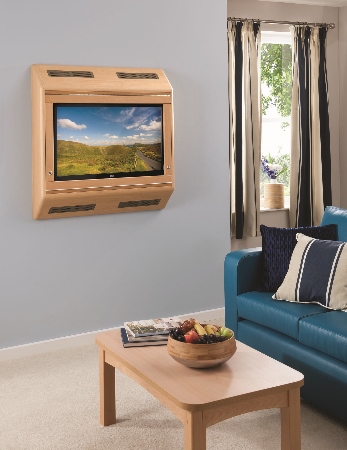Durability, safety and ease of cleaning continue to drive the design of furniture products for mental health environments.
Manufacturers are increasingly being asked to make furniture more robust at the same time as keeping designs non-institutional.
This fine balance means many companies have created specific mental health product lines.
Once upon a time the request was simply to ‘not look institutional’, but now the bar has been set much higher and what’s universally looked for is that the furniture looks the same as might be found in any other environment outside the ward
“There has been a strong, relatively-recent trend towards upgrading the quality of all provision for mental health environments, which is very welcome; and this is most marked in the area of appearance,” said David Vesty, managing director of Tough Furniture.
“It has become conventional wisdom now that the built environment can play a key role in the therapeutic process and furniture is obviously a key element in this, so purchasers are always looking for improved style and appearance across all items.”
Specifiers want a more-domestic feel from furniture, similar to products that would be found in boutique hotels.
Vesty said: “Once upon a time the request was simply to ‘not look institutional’, but now the bar has been set much higher and what’s universally looked for is that the furniture looks the same as might be found in any other environment outside the ward.”
But the challenges of mental health environments mean improvements to design must go hand in hand with safety considerations.
Furniture items must be able to withstand deliberate abuse while continuing to function. They must also protect patients, providing no ligature points and having no sharp edges, corners or possible entrapment points.
“Anti-ligature has become a very big, complex and much-debated issue,” said Vesty.
“The perception of risk across different managements and different patient categories is considerable in our experience.
“The basics start with avoiding the most-obvious ligature points such as the wrong type of hinges or handles, or wardrobe clothes hanging. Thereafter, some people avoid doors and drawers altogether and will sometimes pick up on the tiniest detail as a potential threat. As always we respond and design to what our customers want - theirs is the judgement, and it does vary.”
Greg Myatt of Yewdale agrees that the apparent obsession with anti-ligature products is creating additional pressures for designers.
I see a lot of anti-ligature products going into acute hospitals, which is a complete waste of NHS funds; as well as a lot of over-engineered and over-specified products
“We are seeing more demand for anti-ligature fixtures and fittings, particularly things like mirrors and wall features like noticeboards,” he said.
“I see a lot of anti-ligature products going into acute hospitals, which is a complete waste of NHS funds; as well as a lot of over-engineered and over-specified products.”
As a result Yewdale is launching new whiteboards and mirrors designed specifically for mental health settings.
“A good example of the evolution design process in mental health is our experience with TV cabinets,” added Vesty.
“We have long produced a variety of ToughView cabinets with lockable polycarbonate screens to protect televisions and computers, sometimes even fishtanks. As anti-ligature thinking developed we were asked to add sloping tops to these wall-mounted cabinets as the straight cabinets wereseen as a potential danger. They are selling very well and partly, we think, because they look nicer on the wall.”






